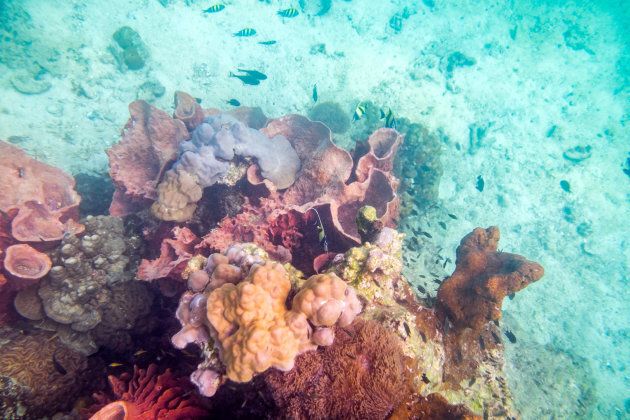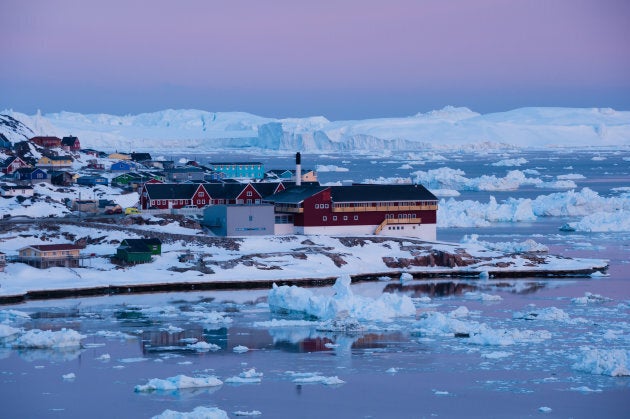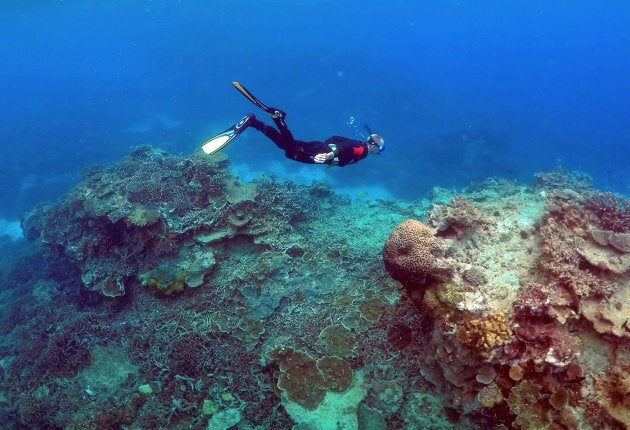The Great Barrier Reef is the largest living structure in the world. It's bigger than Italy, and just slightly smaller than Japan.
Now, Deloitte Access Economics has demonstrated its size in another measure -- it's dollar value.
In a landmark study, they have priced the economic, social and "icon" value of the reef at $56 billion -- a figure which Great Barrier Reef Foundation Director Steve Sargent says makes it "too big to fail".
The Great Barrier Reef is under threat from numerous sources, but the most pressing is the warming of the oceans, which has caused two mass bleachings of the reef in as many years, devastating huge swaths of the 350,000 square kilometres of coral and leading some experts to say the decline of the reef is now "inevitable".
If all the 33,000 Queenslanders employed by the reef lost their jobs today, the state's unemployment rate would jump from 6.1 percent to 7.4 percent -- the highest rate in 25 years.
The Climate Council's Professor Will Steffen said the "number one culprit" for the destruction of the reef is the burning of fossil fuels.
"The science is absolutely clear -- continuing to mine, drill and burn coal, oil and gas will kill the Great Barrier Reef over coming decades," he said.

The landmark report released on Monday shows just how devastating the death of Australia's most iconic World Heritage Site would be, not just as a natural wonder and hub of marine biodiversity (it's home to a third of the world's coral species), but to the tourism industry, the wider economy and to 'Brand Australia'.
Here are the big numbers to come out of the report:
- The Great Barrier Reef is valued at $56 billion;
- It added $6.4 billion to Australia's economy in the 2015-16 financial year;
- $3.9 billion of that was added to Queensland's economy;
- It employs 64,000 Australians -- 39,000 directly and a further 25,000 indirectly.
The report also looked at what would happen in the future if the current degradation of the reef continued, as predicted under a "business as usual" scenario. It calculated that 38 percent of tourists would no longer visit, resulting in a $2.1 billion hit to Australia's tourism industry each year.
These astounding figures have led the Climate Council of Australia to again call on the Queensland and federal Governments to retract their support for Adani's controversial Carmichael mine, which would ship coal to India directly across the reef and pump 4.7 billion tonnes of greenhouse gases into the atmosphere.
Last month, the Council released a report outlining the negative impacts of the mine on the Great Barrier Reef -- and why it wasn't, as its proponents have claimed, such great news for economy either.
There's no doubt the dollar figures are huge, but just what do they mean in real terms?
Here, we've unpacked the figures for you -- to show just how much we have to lose as one of the seven natural wonders of the world is bleaching before our eyes.
The Deloitte Access Economics report calculated the value of the reef at $56 billion, nearly three times the net worth of mining magnate Gina Rinehart.
The reef contributed $6.4 billion to the national economy in 2015-16. That means for every $200 of wealth created in Australia, $1 is generated by the Great Barrier Reef.
If it was a company, it's $6.4 billion annual contribution to the Australian economy would make it one of the 100 most profitable in Australia.
It also means income from the reef outstrips the total income of many small countries, including Greenland, Somalia, Fiji, East Timor and Vanuatu.

These are people employed both directly and indirectly across Australia, mostly through tourism.
That is more jobs than iconic Australian companies like Qantas, Telstra and the National Australia Bank.
It's also around 50 times more jobs than Adani's controversial Carmichael Coal Mine, which is forecast to create just 1,464 direct and indirect jobs over the life of the project, as well as drastically increasing the nation's carbon emissions and contributing to the world's 4.2 million deaths from air pollution annually.
It's also worth pointing out that the Carmichael Mine will provide jobs for decades at most; the Great Barrier Reef is half a million years old, and if preserved, has the ability to add value to our economy in perpetuity.
Just over half the people employed as a result of the reef live in Queensland. If the reef died and all of the 33,000 Queenslanders employed by the reef lost their jobs today, the state's unemployment rate would instantly jump from 6.1 percent to 7.4 percent, the highest rate in 25 years.
Ultimately, though, "the very uniqueness of the Great Barrier Reef renders it priceless", the report authors conclude.
Ninety-five percent of the 1,500 Australian and international respondents surveyed agreed the Great Barrier Reef is an iconic landmark and makes an important contribution to Australia's national identity and international standing.
Incredibly, two-thirds of those surveyed said they would be prepared to pay to protect the reef.

"No single Australian natural asset contributes as much in terms of brand and icon value to international perceptions of Brand Australia as the Great Barrier Reef," the report states.
As one of the reef's biggest proponents, Reef Foundation Director Sargent hopes the report will drive us "to do all we can to protect (the reef's) future – as citizens, as business leaders and across all levels of government."
"This report is a critical step toward truly understanding what's at stake, as most of us can't, and don't want to, imagine a world without the Great Barrier Reef."
Note: This article was amended on 26/6/17 to remove a misprinted graphic and to correct a comparison to Gina Rinehart's net worth.
ALSO ON HUFFPOST AUSTRALIA